#doc: nile 5000 years of history
Photo


14th September 2022: 200th Anniversary of Decipherment of Hieroglyphs:
“According to Hermine Hartleben, who wrote the most extensive biography of Champollion in 1906, the breakthrough came on 14 September 1822, a few days before the Lettre was written, when Champollion was examining copies made by Huyot. One cartouche from Abu Simbel contained four hieroglyphic signs. Champollion guessed, or drew on the same guess found in Young's Britannica article, that the circular first sign represented the sun. The Coptic word for "sun" was re. The sign that appeared twice at the end of the cartouche stood for "s" in the cartouche of Ptolemy. If the name in the cartouche began with Re and ended with ss, it might thus match "Ramesses", suggesting the sign in the middle stood for m.
Further confirmation came from the Rosetta Stone, where the m and s signs appeared together at a point corresponding to the word for "birth" in the Greek text, and from Coptic, in which the word for "birth" was mise. Another cartouche contained three signs, two of them the same as in the Ramesses cartouche. The first sign, an ibis, was a known symbol of the god Thoth. If the latter two signs had the same values as in the Ramesses cartouche, the name in the second cartouche would be Thothmes, corresponding to the royal name "Tuthmosis" mentioned by Manetho. These were native Egyptian kings, long predating Greek rule in Egypt, yet the writing of their names was partially phonetic.
Now Champollion turned to the title of Ptolemy found in the longer cartouches in the Rosetta Stone. Champollion knew the Coptic words that would translate the Greek text and could tell that phonetic hieroglyphs such as p and t would fit these words. From there he could guess the phonetic meanings of several more signs. Upon making these discoveries Champollion raced to his brother's office at the Académie des Inscriptions, flung down a collection of copied inscriptions, cried "Je tiens mon affaire!" ("I've done it!") and collapsed in a days-long faint.” [X]
#egypt#ancient egypt#egyptology#archaeology#historyedit#mine#my edit#documentary#doc: the nile 5000 years of history#champollion#rosetta stone#hieroglyphs
846 notes
·
View notes
Photo
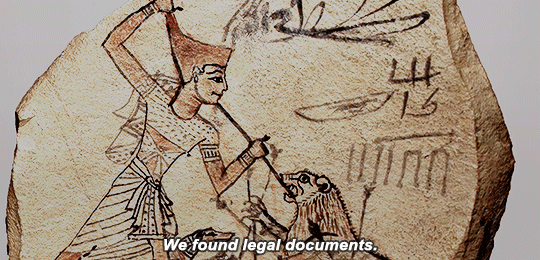





Dr. Yasmin El Shazly talks about the importance of the village of Deir El Medina, which housed the craftsmen who build and decorated the tombs in the Valley of the Kings (Nile: 5,000 Years of History, 2018).
#egypt#ancient egypt#egyptology#archaeology#historyedit#mine#my edit#documentary#doc: nile 5000 years of history
1K notes
·
View notes
Photo


Thoth was the god of the moon, sacred texts, mathematics, the sciences, magic, messenger and recorder of the deities, master of knowledge, and patron of scribes. His Egyptian name was Djehuty, which means “He who is like the Ibis.” He was depicted as an ibis bird or a baboon. [X]
#egypt#ancient egypt#egyptology#archaeology#historyedit#mine#my edit#documentary#doc: nile 5000 years of history
425 notes
·
View notes
Photo


The ancient Egyptian name of the country was Kemet (𓆎𓅓𓏏𓊖) km.t, which means black land, likely referring to the fertile black soils of the Nile flood plains, distinct from the deshret (dšṛt), or "red land" of the desert.
This name is commonly vocalised as Kemet, but was probably pronounced [kuːmat] in ancient Egyptian. The name is realised as kēme and kēmə in the Coptic stage of the Egyptian language, and appeared in early Greek as Χημία (Khēmía).
Another name was ⟨tꜣ-mry⟩ "land of the riverbank". The names of Upper and Lower Egypt were Ta-Shem-ahu (tꜣ-šmꜥw) "sedgeland" and Ta-Mehew (tꜣ mḥw) "northland", respectively. [X]
#egypt#ancient egypt#egyptology#archaeology#historyedit#mine#my edit#documentary#doc: nile 5000 years of history
441 notes
·
View notes
Photo
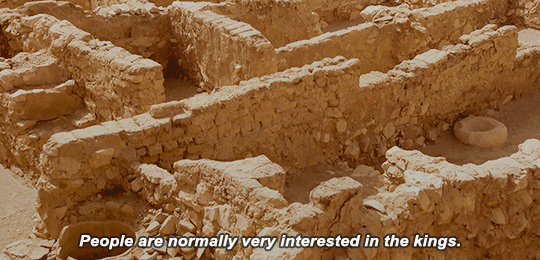



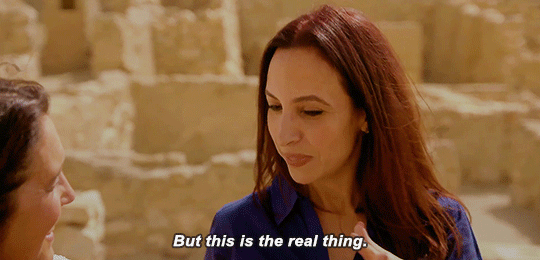
Dr. Yasmin El Shazly talks about the importance of the worker’s village of Deir El Medina (Nile: 5,000 Years of History, 2018)
#egypt#ancient egypt#egyptology#archaeology#historyedit#mine#my edit#documentary#doc: nile 5000 years of history
1K notes
·
View notes
Photo


Deir el-Medina is the modern Arabic name for the worker's village (now an archaeological site) which was home to the artisans and craftsmen of Thebes who built and decorated the royal tombs in the nearby Valley of the Kings and Valley of the Queens.
The ancient inhabitants called the village Pa Demi (“the village”) but it was referred to in official correspondence as Set-Ma'at (“The Place of Truth”) because the workers there were thought to be inspired by the gods in creating the eternal homes of the deceased kings and their families. Early in the Christian era the village, then deserted, was occupied by monks who took over the Temple of Hathor for use as a cloister. The temple was referred to as Deir el-Medina (“Monastery of the Town”) and this name finally came to be applied to the entire site.
Unlike most villages in ancient Egypt, which grew up organically from small settlements, Deir el-Medina was a planned community. It was founded by Amenhotep I (c.1541-1520 BCE) specifically to house workers on royal tombs because tomb desecration and robbery had become a serious concern by his time. It was decided that the royalty of Egypt would no longer advertise their final resting places with large monuments but, instead, would be buried in a less accessible area in tombs cut into the cliff walls. These areas would become the necropolises now known as the Valley of the Kings and the Valley of the Queens and those who lived in the village were known as “Servants in the Place of Truth” for their important role in creating eternal homes and also remaining discreet regarding tomb contents and location. [X]
#egypt#ancient egypt#egyptology#archaeology#historyedit#mine#my edit#documentary#doc: nile 5000 years of history
204 notes
·
View notes
Photo

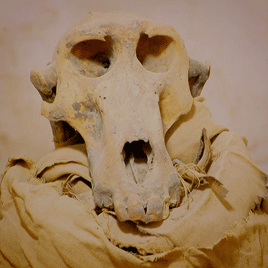
Thoth was the god of the moon, sacred texts, mathematics, the sciences, magic, messenger and recorder of the deities, master of knowledge, and patron of scribes. His Egyptian name was Djehuty, which means “He who is like the Ibis.” He was depicted as an ibis bird or a baboon. [X]
#egypt#ancient egypt#egyptology#archaeology#historyedit#mine#my edit#documentary#doc: nile 5000 years of history
163 notes
·
View notes
Photo
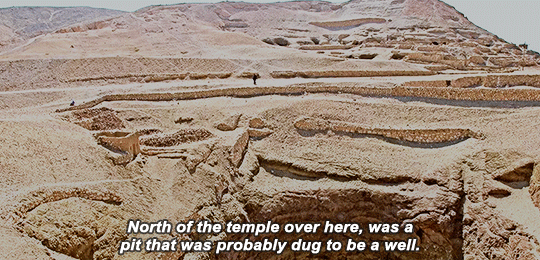




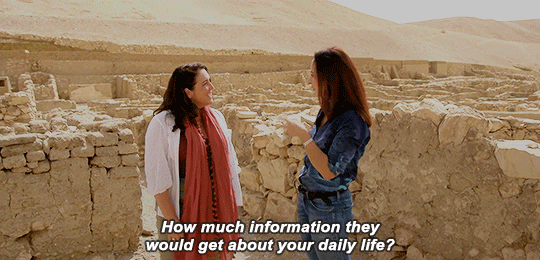
Dr. Yasmin El Shazly talks about the importance of the village of Deir El Medina, which housed the craftsmen who build and decorated the tombs in the Valley of the Kings (Nile: 5,000 Years of History, 2018).
#egypt#ancient egypt#egyptology#archaeology#historyedit#mine#my edit#documentary#doc: nile 5000 years of history
464 notes
·
View notes
Photo


Beni Hasan (Arabic: بني حسن) is an ancient Egyptian cemetery. It is located approximately 20 kilometers (12 mi) to the south of modern-day Minya in the region known as Middle Egypt, the area between Asyut and Memphis.
While there are some Old Kingdom burials at the site, it was primarily used during the Middle Kingdom, spanning the 21st to 17th centuries BCE (Middle Bronze Age).
To the south of the cemetery is a temple constructed by Hatshepsut and Thutmose III, dedicated to the local goddess Pakhet. It is known as the Cave of Artemis, because the Greeks identified Pakhet with Artemis, and the temple is subterranean. [X]
#egypt#ancient egypt#egyptology#archaeology#historyedit#mine#my edit#documentary#doc: nile 5000 years of history#beni hasan
164 notes
·
View notes
Photo
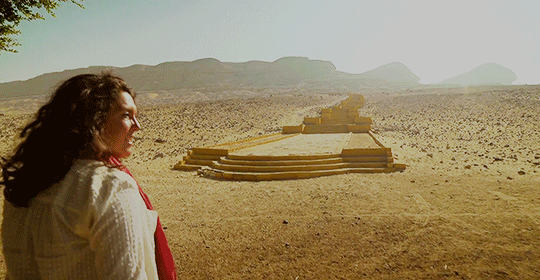
Stairway to the rock-cut tombs of Beni Hasan in Middle Egypt.
At this site, the provincial high elite were buried in large and elaborately decorated tombs carved into the limestone cliffs near the provincial capital, located in the upper cemetery area. These tombs lie in a row on a north–south axis. There is a slight break in the natural rock terrace, on to which they open, that divides the thirty-nine high status tombs into two groups. The basic design of these elite tombs was an outer court and a rock-cut pillared room (sometimes referred to as the chapel) in which there was a shaft that led to the burial chamber.
Some of the larger tombs have biographical inscriptions and were painted with scenes of daily life and warfare. They are famous for the quality of their paintings. Nowadays, many of these scenes are in poor condition, though in the 19th century copies were made of several of them. [X]
#egypt#ancient egypt#egyptology#archaeology#historyedit#mine#my edit#documentary#doc: nile 5000 years of history
126 notes
·
View notes
Photo
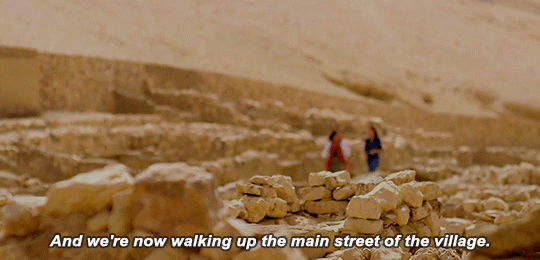
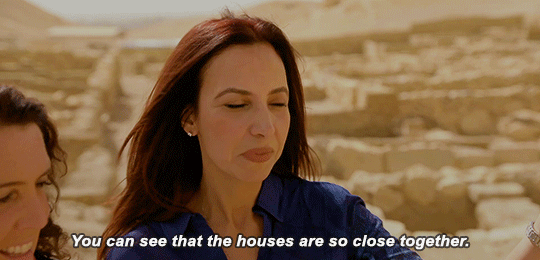
Dr. Yasmin El Shazly talks with Bettany Hughes as they walk through the village of Deir El Medina, which housed the craftsmen who build and decorated the tombs in the Valley of the Kings (Nile: 5,000 Years of History, 2018).
#egypt#ancient egypt#egyptology#archaeology#historyedit#mine#my edit#documentary#doc: nile 5000 years of history
136 notes
·
View notes
Photo



Dr. Yasmin El Shazly talks about the importance of the village of Deir El Medina, which housed the craftsmen who build and decorated the tombs in the Valley of the Kings (Nile: 5,000 Years of History, 2018).
#egypt#ancient egypt#egyptology#archaeology#historyedit#mine#my edit#documentary#doc: nile 5000 years of history#yasmin el shazly
124 notes
·
View notes
Photo

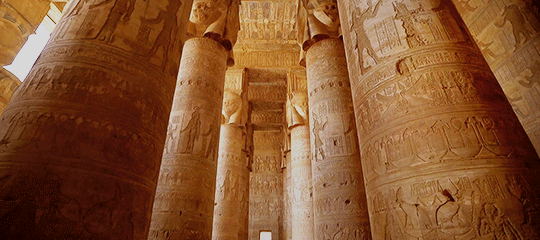
Dendera Temple: the dominant building in the complex is the Temple of Hathor. The temple has been modified on the same site starting as far back as the Middle Kingdom, and continuing right up until the time of the Roman emperor Trajan. The existing structure began construction in the late Ptolemaic period at the time of Ptolemy Auletes in July 54 BCE and the hypostyle hall was built in the Roman period under Tiberius.
#egypt#ancient egypt#egyptology#archaeology#historyedit#mine#my edit#doc: the nile 5000 years of history#documentary
1K notes
·
View notes
Photo


Innermost coffin of Tutankhamun which held the mummy of the king. It is made of gold and still remains within its sarcophagus in the tomb (kv62).
#egypt#ancient egypt#egyptology#archaeology#historyedit#mine#my edit#documentary#doc: the nile 5000 years of history#tutankhamun#kv62#valley of the kings#luxor#thebes#waset
594 notes
·
View notes
Photo

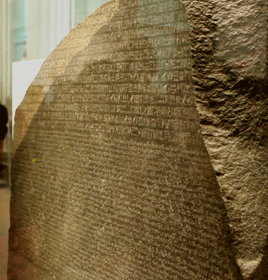
The Rosetta Stone is a granodiorite stele inscribed with three versions of a decree issued in Memphis, Egypt, in 196 BC during the Ptolemaic dynasty on behalf of King Ptolemy V Epiphanes. The top and middle texts are in Ancient Egyptian using hieroglyphic and Demotic scripts respectively, while the bottom is in Ancient Greek. The decree has only minor differences between the three versions, making the Rosetta Stone key to deciphering the Egyptian scripts. [X]
#egypt#ancient egypt#egyptology#archaeology#historyedit#mine#my edit#documentary#doc: the nile 5000 years of history#rosetta stone
413 notes
·
View notes
Photo
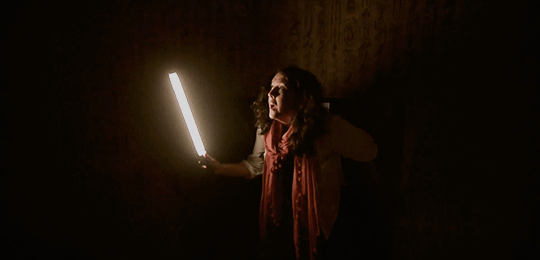
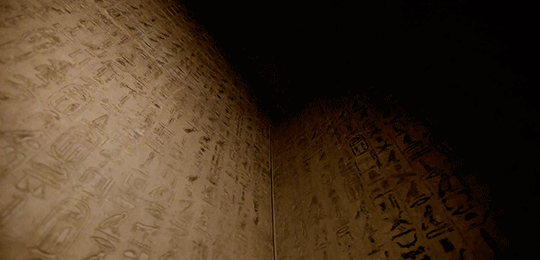

The inscriptions, known as the Pyramid Texts, were the central innovation of Unas's pyramid, on whose subterranean walls they were first etched. The Pyramid Texts are the oldest large corpus of religious writing known from ancient Egypt. A total of 283 such spells, out of at least 1,000 known and an indeterminate number of unknown ones, appear in Unas's pyramid. The spells are the smallest and best-preserved collection of Pyramid Texts known from the Old Kingdom. Though they first appeared in Unas's pyramid, many of the texts are significantly older. The texts subsequently appeared in the pyramids of the kings and queens of the Sixth to Eighth Dynasties, until the end of the Old Kingdom. [X]
#egypt#ancient egypt#egyptology#archaeology#historyedit#mine#my edit#documentary#doc: the nile 5000 years of history#unas#old kingdom#dynasty 5#pyramid texts
345 notes
·
View notes